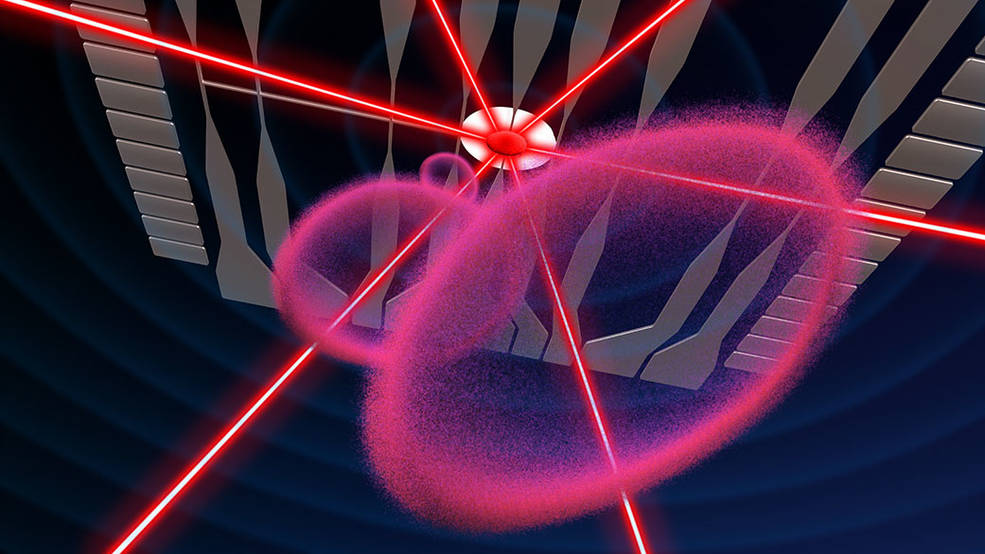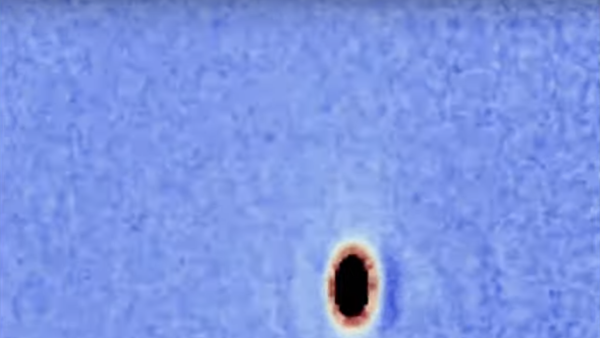
Inside NASA's Cold Atom Laboratory (CAL), scientists have formed a gas of ultracold atoms into bubbles of ultracold atoms, helping to open up new avenues for quantum research. The related results were published in Nature. 
Microgravity refers to a situation where gravity appears to be so small that a person or object appears to be weightless in this environment. The effects of microgravity can be seen as astronauts and objects float in space. In microgravity conditions, astronauts can float in the spacecraft, or spacewalk outside the spacecraft. Heavy objects can also be easily moved in microgravity. Astronauts, for example, can move hundreds of pounds of equipment with their fingertips.
Microgravity is not created by Earth's gravity, but by factors such as the remnant atmosphere of space. NASA says that microgravity is not zero gravity and should not be confused.
The Cold Atom Laboratory launched to the International Space Station in March 2018 and was installed a few months after launch. It consists of two standardized containers: As shown, the Cold Atom Laboratory scientific instrument on the left contains the science module, which cools atoms to near absolute zero (absolute zero is minus 273 degrees Celsius) and is about the size of a small refrigerator ; the smaller container on the right contains the other required hardware. The Cold Atom Laboratory can take advantage of the microgravity environment of the International Space Station to further study quantum phenomena.
This ultracold atomic bubble could be used in a new type of experiment to study an exotic state of matter, a fifth state of matter (different from gases, liquids, solids and plasmas) known as Bose-Ein Stein Condensation (BEC) is a gaseous, superfluid state of matter exhibited by boson atoms when cooled to near absolute zero.
The aforementioned research did not require the assistance of astronauts. These ultracold atomic bubbles are created in the Cold Atom Laboratory's sealed vacuum chamber, using magnetic fields to gently manipulate the gas to form different shapes. The Cold Atom Laboratory can be remotely operated by NASA's Jet Propulsion Laboratory. The largest of these bubbles is about 1 millimeter in diameter and 1 micrometer in thickness (ie, one thousandth of a millimeter).
"These are not like ordinary soap bubbles," said lead author David Aveline, a science team member at NASA's Cold Atom Laboratory at NASA's Jet Propulsion Laboratory in Southern California. "As far as we know, there is nothing in nature like cold atom experiments. The atomic gas that the chamber produces is cooler. So we took this very unique gas and started to study how it behaves when it forms completely different geometries. Historically, when a material was manipulated in this way, it It will lead to very interesting physical phenomena, as well as new applications."
Using the Cold Atom Laboratory on the International Space Station to conduct the aforementioned experiments allows scientists to better cancel out the effects of gravity, which normally affects the motion and behavior of fluids.
Based on the ultracold atomic bubbles that have formed so far, the next step is to transform the ultracold gas that makes up these bubbles into a BEC state and observe how it behaves.
"The primary goal of the Cold Atom Laboratory is fundamental research, and we want to use the unique space environment of the space station to explore the quantum properties of matter," said Jason Williams, a project scientist at the Cold Atom Laboratory at NASA's Jet Propulsion Laboratory. Ultracold atoms are a good example."

Image via "Nature"
Since NASA's Apollo program, American astronauts have documented how liquid behaves differently in microgravity than on Earth: In microgravity, the liquid combines into floating spheres, rather than the heavier bottom seen on Earth. , drooping water drop shape.Microgravity refers to a situation where gravity appears to be so small that a person or object appears to be weightless in this environment. The effects of microgravity can be seen as astronauts and objects float in space. In microgravity conditions, astronauts can float in the spacecraft, or spacewalk outside the spacecraft. Heavy objects can also be easily moved in microgravity. Astronauts, for example, can move hundreds of pounds of equipment with their fingertips.
Microgravity is not created by Earth's gravity, but by factors such as the remnant atmosphere of space. NASA says that microgravity is not zero gravity and should not be confused.
The Cold Atom Laboratory launched to the International Space Station in March 2018 and was installed a few months after launch. It consists of two standardized containers: As shown, the Cold Atom Laboratory scientific instrument on the left contains the science module, which cools atoms to near absolute zero (absolute zero is minus 273 degrees Celsius) and is about the size of a small refrigerator ; the smaller container on the right contains the other required hardware. The Cold Atom Laboratory can take advantage of the microgravity environment of the International Space Station to further study quantum phenomena.

Image via NASA/JPL
This time, using the aforementioned Cold Atom Laboratory, the researchers took samples of atoms cooled to within a millionth of a degree above absolute zero and shaped them into extremely thin hollow spheres. The ultracold atomic gas starts out as a small clump, like an egg yolk, and is then shaped into something more like a thin eggshell. Attempts like this have failed repeatedly on Earth, as atoms on Earth clump downwards, forming a shape more like a contact lens than a bubble.This ultracold atomic bubble could be used in a new type of experiment to study an exotic state of matter, a fifth state of matter (different from gases, liquids, solids and plasmas) known as Bose-Ein Stein Condensation (BEC) is a gaseous, superfluid state of matter exhibited by boson atoms when cooled to near absolute zero.

Image via NASA/JPL
In BEC, scientists can observe the quantum properties of atoms on a scale visible to the naked eye. For example, atoms and particles sometimes behave like solids and sometimes like waves, that is, exhibiting the quantum properties of "wave-particle duality".The aforementioned research did not require the assistance of astronauts. These ultracold atomic bubbles are created in the Cold Atom Laboratory's sealed vacuum chamber, using magnetic fields to gently manipulate the gas to form different shapes. The Cold Atom Laboratory can be remotely operated by NASA's Jet Propulsion Laboratory. The largest of these bubbles is about 1 millimeter in diameter and 1 micrometer in thickness (ie, one thousandth of a millimeter).
"These are not like ordinary soap bubbles," said lead author David Aveline, a science team member at NASA's Cold Atom Laboratory at NASA's Jet Propulsion Laboratory in Southern California. "As far as we know, there is nothing in nature like cold atom experiments. The atomic gas that the chamber produces is cooler. So we took this very unique gas and started to study how it behaves when it forms completely different geometries. Historically, when a material was manipulated in this way, it It will lead to very interesting physical phenomena, as well as new applications."

Ultracold atomic bubble formation on the International Space Station, video via NASA/JPL (00:16)
Placing materials under different physical conditions is the key to understanding material properties and is often the first step in finding practical applications for them.Using the Cold Atom Laboratory on the International Space Station to conduct the aforementioned experiments allows scientists to better cancel out the effects of gravity, which normally affects the motion and behavior of fluids.
Based on the ultracold atomic bubbles that have formed so far, the next step is to transform the ultracold gas that makes up these bubbles into a BEC state and observe how it behaves.
"The primary goal of the Cold Atom Laboratory is fundamental research, and we want to use the unique space environment of the space station to explore the quantum properties of matter," said Jason Williams, a project scientist at the Cold Atom Laboratory at NASA's Jet Propulsion Laboratory. Ultracold atoms are a good example."
Related Posts
0 Comments
Write A Comments
